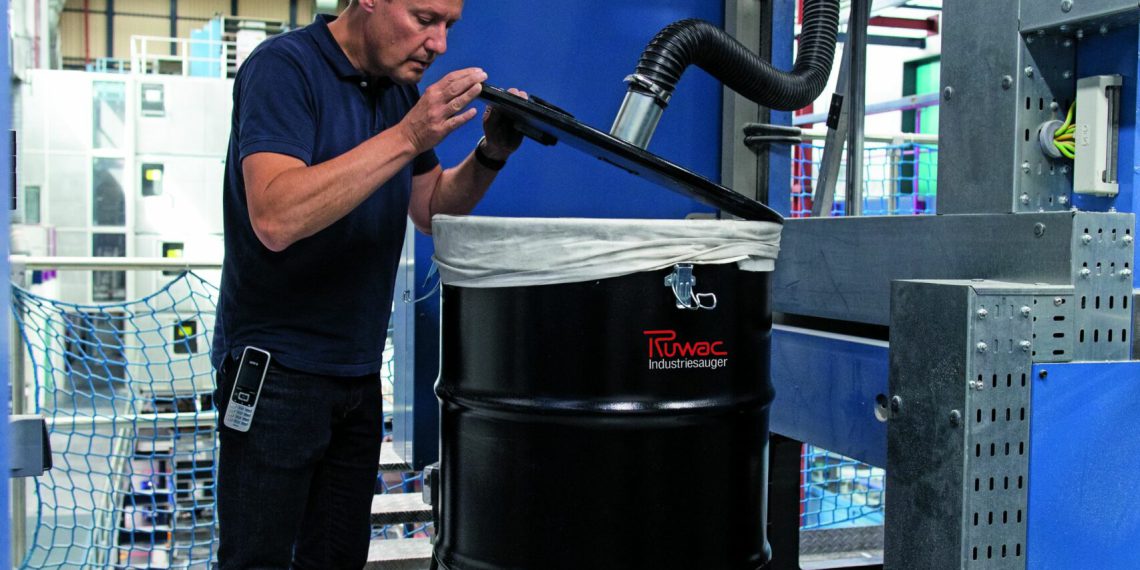Several Ruwac DAV-SB vacuums ensure a clean printing process at the Mitteldeutsche Zeitung printing plant in Halle/ Saale — for around 150,000 newspapers per night shift. They continuously vacuum up paper dust, offcuts, etc. and are ideally suited for precisely this purpose.
7:30 p.m. to 2:00 a.m., six times a week: that’s the “working time” of the three gigantic presses that produce around 140,000 copies of the Mitteldeutsche Zeitung in web offset printing during these six and a half hours. That’s 21,000 complete newspapers per hour, or a good 350 per minute, and it takes about 20 tons of paper — day after day.
It goes without saying that the numerous printing, transport, cutting and folding processes in the multi-story, house-sized facilities also generate large quantities of paper dust and strips, offcuts, etc. It is also a matter of course that these waste materials are returned to the printing plant. It is equally self-evident that these residues must be removed from the printing process.
“The paper dust that inevitably arises must not settle on either the print heads or the paper. Otherwise, we would not be able to guarantee flawless printing.”
- Sven Dittrich, Production Manager
For this reason, there are suction units on every level of the printing systems that are directly integrated into the production process and continuously ensure that fine paper dust is immediately extracted, as well as larger paper scraps and strips.
The manufacturer has supplied these suction units directly with the presses and they are also integrated into the production process in terms of control technology: as soon as a press starts up, the suction units start automatically and ensure permanent suction.
The suction units are the DAV-SB series, which was developed from the ground up for vacuuming up fluff, trim remnants, etc. on production equipment and is therefore also known internally as the “fluff suction unit”. Suction power, vacuum and mechanical design are adapted to strongly compress the vacuumed material in a dust class M filter bag. This means that the volume of the filter can be optimally utilized. To change the filter, the operator only has to lift the vacuum cleaner lid and replace the filter bag. A viewing window in the lid allows the fill level to be checked regularly.
The compact units can also fit into confined spaces, and they offer connection options for an additional suction hose. They thus fulfill a dual function: they continuously extract paper dust from the process, and they are equipped with an additional 8‑meter suction hose for easy and convenient vacuuming of machines in the vicinity. Sven Dittrich: “Instead of using additional mobile industrial vacuums on each level, which we would then have to transport from one place to another, we can vacuum and clean everything directly on site. That saves us a lot of lugging around and ultimately the search for a free unit.” All in all, the print shop manager’s assessment of the vacuums is positive: “When you need them, they’re there. Otherwise, you don’t have to worry much about them. That’s the way it should be.”

















